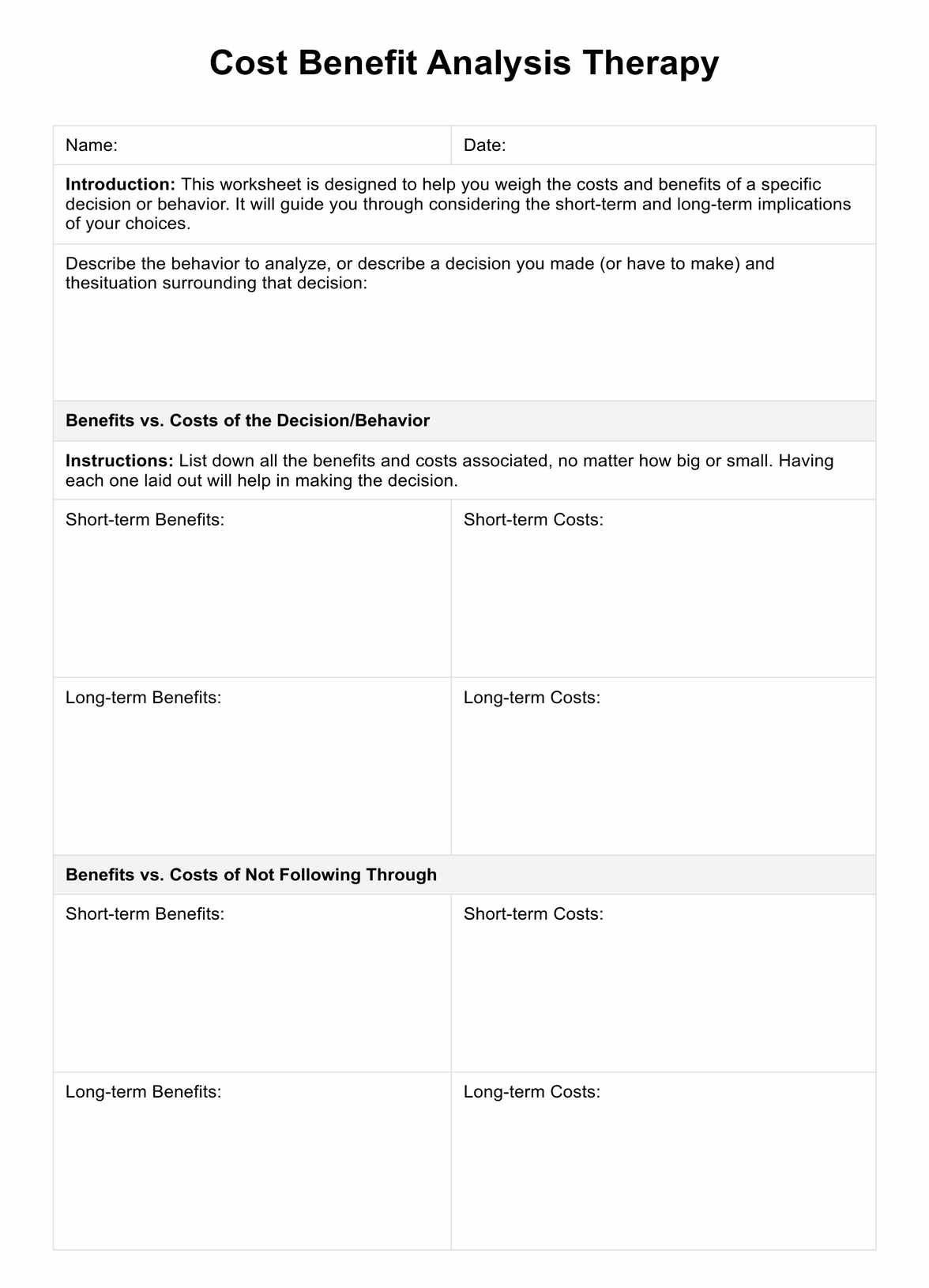Cost-benefit analysis in therapy is a cognitive-behavioral tool that helps clients evaluate the pros and cons of a specific behavior or decision. It involves listing the short-term and long-term benefits and costs of making informed choices about changes in behavior or thinking patterns.

Cost Benefit Analysis Therapy
Explore the benefits of cost-benefit analysis therapy for decision-making in treatment—ideal for therapists and clients seeking practical problem-solving skills.
Cost Benefit Analysis Therapy Template
Commonly asked questions
To perform a cost-benefit analysis (CBA) in therapy, clients list the benefits and costs of engaging in and avoiding a particular behavior or decision. This process includes considering both short-term and long-term impacts to provide a comprehensive view of potential outcomes, letting you make decisions with mental clarity.
The time to complete a cost-benefit analysis can vary based on the complexity of the decision or behavior being analyzed. Generally, it can take anywhere from a single session to multiple sessions, depending on the depth of analysis required and the client's progress.
EHR and practice management software
Get started for free
*No credit card required
Free
$0/usd
Unlimited clients
Telehealth
1GB of storage
Client portal text
Automated billing and online payments











